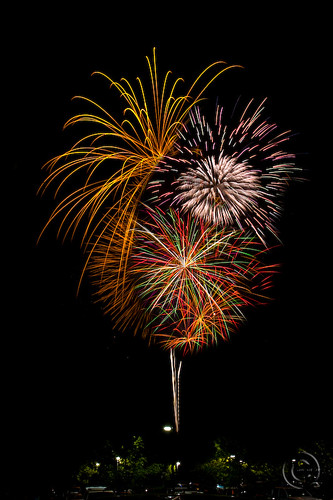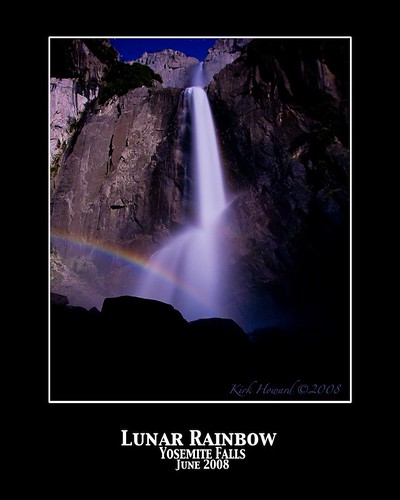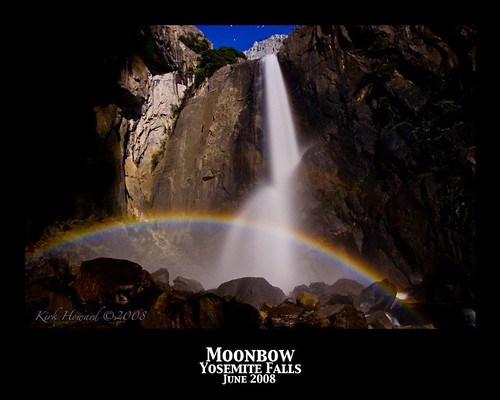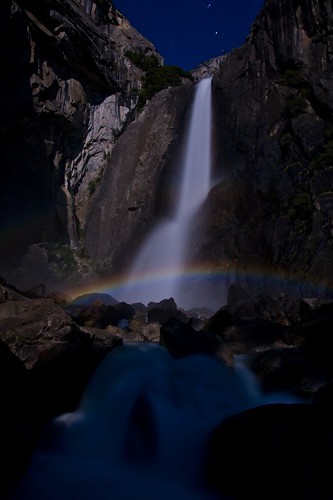Moonbow sounds like the name of one of Frank Zappas daughters...
The dynamics of my office are changing, and my bosses, boss suggested I take a few days off. Because they don’t know if I will get any time off in the near future. I took advantage of the offer and decided to take the last two days of last week off. This coincided with the June full moon.
Armed with the knowledge of a full moon and the understanding that Magellan had to work. I decided to take another trip to Yosemite Valley, alone. Last month when Magellan and I were in Yosemite it was also a full moon, but unfortunately I didn’t know about the “Lunar Rainbow” phenomenon. I found out about it after I got back to the house. However, this month I knew about it and was given the time to take advantage of the moon.
On Wednesday late afternoon I made reservations at Housekeeping campsite, and I think I got the last site available. Its summer and every hotel, cabin and campsite are booked through the summer and early fall.
I walked over to the Ansel Adams Gallery in Yosemite Village. If you are a photographer and find yourself in the Yosemite Valley, you need to make a stop at the Gallery. Not only is it a good place to cool down on a hot summer day, but it is a valuable fountain of knowledge. Most of the Ansel Adams Gallery staff are photography students or professionals. With very little coaxing they are willing to share their knowledge and expertise for free.
Example: I walked to the gallery and talked to the lady behind the photo counter. I told her that I had made the journey for the “Lunar Rainbow”. Immediately she told me that the previous night was the actually the full moon, but I should still get some good shots.
I explained that this was my fist time… taking lunar rainbow images, and before I could get the last syllable out she laid down a list of tips. The most important tip was the time. I knew the moon would rise around 9:30~10:00 PM. Yes it does for the rest of the world, but in the Yosemite Valley it has to clear the south rim. Which translates to several hours later. On Wednesday full moon for the Valley was around midnight. The next night, the night I was there, it was expected to be an hour later at 1:00 AM. I also asked for some tips and tricks.
My first image was shot with an ISO of 400. With and exposure of 101.0 seconds and an aperture of f/3.5. I didn’t want to blow it so I made sure I was wide open to get the image. As the night or morning progressed and I became more confident, I changed my ISO to 200, but kept the aperture wide open.
I shot from three different locations. Each time I changed location, I moved closer to the river and further away from the falls. My final position I found a flat boulder about 10 feet into the river. It was the perfect platform to set up shop. This allowed me to have more of the river flow in my image.
For my fist attempt I will say I didn’t do a bad job. However I did make some notes for next time. I would use a small aperture like f/16 or f/22 to give greater Depth of Field. I would also use a wider angle lens. I was used an 18mm ~ 200mm lens, set to 18mm. If I had a little wider lens I could have incorporated more of the night sky. Last, I would have done this at full moon in May. But I understand on the night of the full moon in May with the melt off water flow at full throttle that over 800 photographers were present to capture the event. More people then I would want to deal with.












 It was announced on Saturday that this might be the last lighting of the Pigeon Point Lighthouse Lantern. With further investigation it may be discontinued until the necessary renovations are completed to fix the damaged lighthouse structure.
It was announced on Saturday that this might be the last lighting of the Pigeon Point Lighthouse Lantern. With further investigation it may be discontinued until the necessary renovations are completed to fix the damaged lighthouse structure. Donations can be made to restore the Pigeon Point Light Station or to Cal. State Parks Foundation.
Donations can be made to restore the Pigeon Point Light Station or to Cal. State Parks Foundation.







